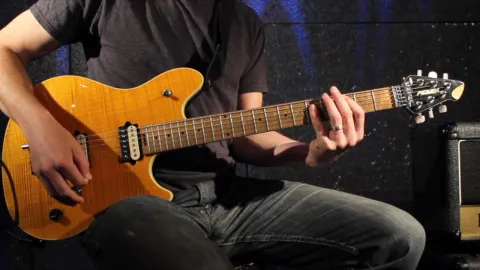Music Theory - Modal Interchange

Welcome to level 8! In this first lesson we will be discussing modal interchange. Modal interchange is exactly what it sounds like: interchanging chords from parallel modes.
A parallel mode can be any of our 7 modes, but with the same root or tonic. For example: C Ionian and C Aeolian are parallel. So are F Dorian and F Lydian. Easy.
Modal interchange is a great way to add more color and texture to our progressions, while still maintaining a key-centered approach.
By now, I am positive you all are experiencing that diatonic music gets very boring after a while. This is true with most everything in life. Over time, we eventually want to hear more complex sounds.
Modal interchange gives us a great number of options to make our progressions more interesting. This practice is rampant in most every genre. The most commonly borrowed chords are from the relative minor scale, but chords can be borrowed from any of the modes. Look at the chart below:
|
Ionian |
I Ma7 |
II Mi7 |
III Mi7 |
IV Ma7 |
V7 |
VI Mi7 |
VII Mi7(b5) |
|
Dorian |
I Mi7 |
II Mi7 |
bIII Ma7 |
IV7 |
V Mi7 |
VI Mi7(b5) |
bVII Ma7 |
|
Phrygian |
I Mi7 |
bII Ma7 |
bIII7 |
IV Mi7 |
V Mi7(b5) |
bVI Ma7 |
bVII Mi7 |
|
Lydian |
I Ma7 |
II7 |
III Mi7 |
#IV Mi7(b5) |
V Ma7 |
VI Mi7 |
VII mi7 |
|
Mixolydian |
I7 |
II Mi7 |
III Mi7(b5) |
IV Ma7 |
V Mi7 |
VI Mi7 |
bVII Ma7 |
|
Aeolian |
I Mi7 |
II Mi7(b5) |
bIII Ma7 |
IV Mi7 |
V Mi7 |
bVI Ma7 |
bVII7 |
|
Locrian |
I Mi7(b5) |
bII Ma7 |
bIII Mi7 |
IV Mi7 |
bV Ma7 |
bVI7 |
bVII Mi7 |
In the key of C Major or Ionian we have:
Cma7, Dmi7, Emi7, Fma7, G7, Ami7 Bmi7b5.
These are our diatonic chords. Now let’s look at our parallel Minor or Aeolian chords:
Cmi7, Dmi7b5, Ebma7, Fmi7, Gmi7, Abma7, Bb7.
If you notice, we notate each of the chords as it relates to the tonic. It is important to note that some of these chords will not sound very good. Some will sound great.
The idea here is to open you up to a broader array of options and get out of the diatonic rut.
Get un-stuck.
Get used to the sound of borrowing chords and experiment on your own.
Make up some progressions. Enjoy!